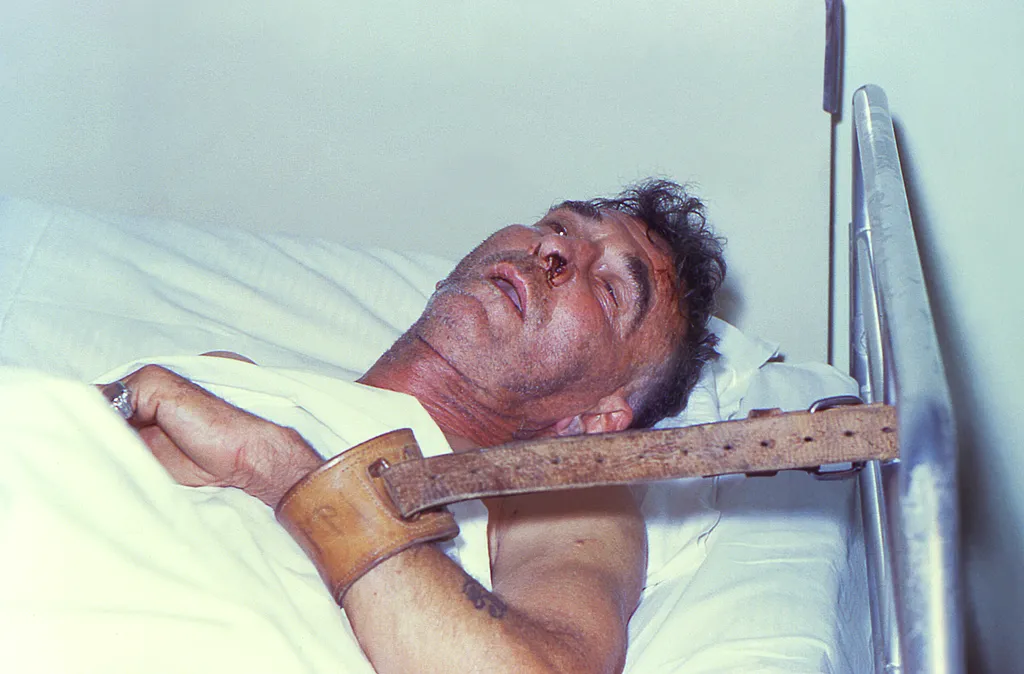A week ago, my dog bit a police officer who broke into my home. You see, police officers in under develop countries can be a lot of mess. They can be so unprofessional and this time, they decided to come to my home. I was inside, and I heard a thud outside, when I would reach for the place, I saw my dog already gripping and about tearing off the Achilles Tendon of a man in uniform. Actually, he jumped the fence into the house while I was inside, that was wrong. Finally, they had no warrant, and no reason to come to my house at first. The Police man cried in pain and was hitting my dog, but she wasn't going to leave him for anything in the world. I was able to command my dog to let him be, but then, he had to be rushed for treatment. When I was asked, I told the doctor, my dog was vaccinated and has all the necessary injections that would matter, so there was no need to fear when it has to do with Rabies. I hope the police handles the case of the officer with utmost sincerity, but I am not going to ask about the officer again, I guess my dog did a good job. It is funny how my dog will not harm a person who comes in from the front door, but would attack a person who comes in from the fence, I guess his trainer did a good job. With this, I decided to write on Rabies.
Rabies is an acute viral disease affecting the central nervous system, causing rage/madness. The Rabies Virus belongs to the genus Lyssavirus, and the family of Rhabdoviridae. According to the WHO, when the clinical manifestation of Rabies begins, it is virtually 100% fatal. It is estimated to cause a death of 59,000 people annually, with a large percentage of 95% being from Africa and Asia. Rabies is a zoonotic disease which is transmitted from animals to humans, and according to the WHO, 99% of cases are transmitted from domestic dogs. In very low case is it transferred from humans to humans, basically from organ transplant.
The Rabies virus is a Neurotropic virus, and affects the nervous system of its host by attacking specific neurons in the nervous system, making it difficult to cure when the symptoms start to show but can be 100% prevented if treated within 10 days of the bite, or scratch. Its incubation period is usually within 1 month to 3 months after bite.
In the Pathogenesis, the virus enters into the muscle tissue via a transdermal inoculation (wound from bite) since it cannot penetrate a skin that isn't broken. The virus quickly target the nerves in the body after replicating slowly in the muscles of the body. When the virus penetrates into the peripheral nervous system, symptoms like numbness of the area of bite is felt, alongside being feverish and having headache. The Virus in the peripheral nervous system moves centripetally to the central nervous system. In the brain, the virus starts to replicate, causing the brain to swell and expand against the skull. This will lead to rabies symptoms such as anxiety, aggression, insomnia, and Paralysis. When the virus replicates completely, and move centrifugally to other tissues, organs and the saliva, and holds its position in the central nervous system. The Virus goes to the saliva and the salivary gland, causing the salivary gland to hyper-produce saliva. When the organs are affected, they cause vomiting, and nausea, after which the patient falls into a coma, and die.
Diagnosing rabies in the early stage is very difficult, as unvaccinated persons are often negative to the virus-neutralizing antibodies until when the virus starts to show physical manifestation. Anti-Rabies injection is a good way to kill the virus before it begins, and prevention of animal rabies can be prevented by vaccinating animals susceptible to the rabies virus.
Conclusion
Although my dog is vaccinated, I ensured the police officer was given an anti-rabies injection. It is good that we remember that Rabies virus is indeed 100% fatal in humans, and can be 100% preventable with post-exposure prophylaxis (PEP). The Closer a Rabies infected bite is to the brain, the sooner the physical effect begins. When pets that haven't been vaccinated licks a person's open wound, it is advisable to wash the region with soapy water for 15 minutes, after which seeking medical help should follow.
